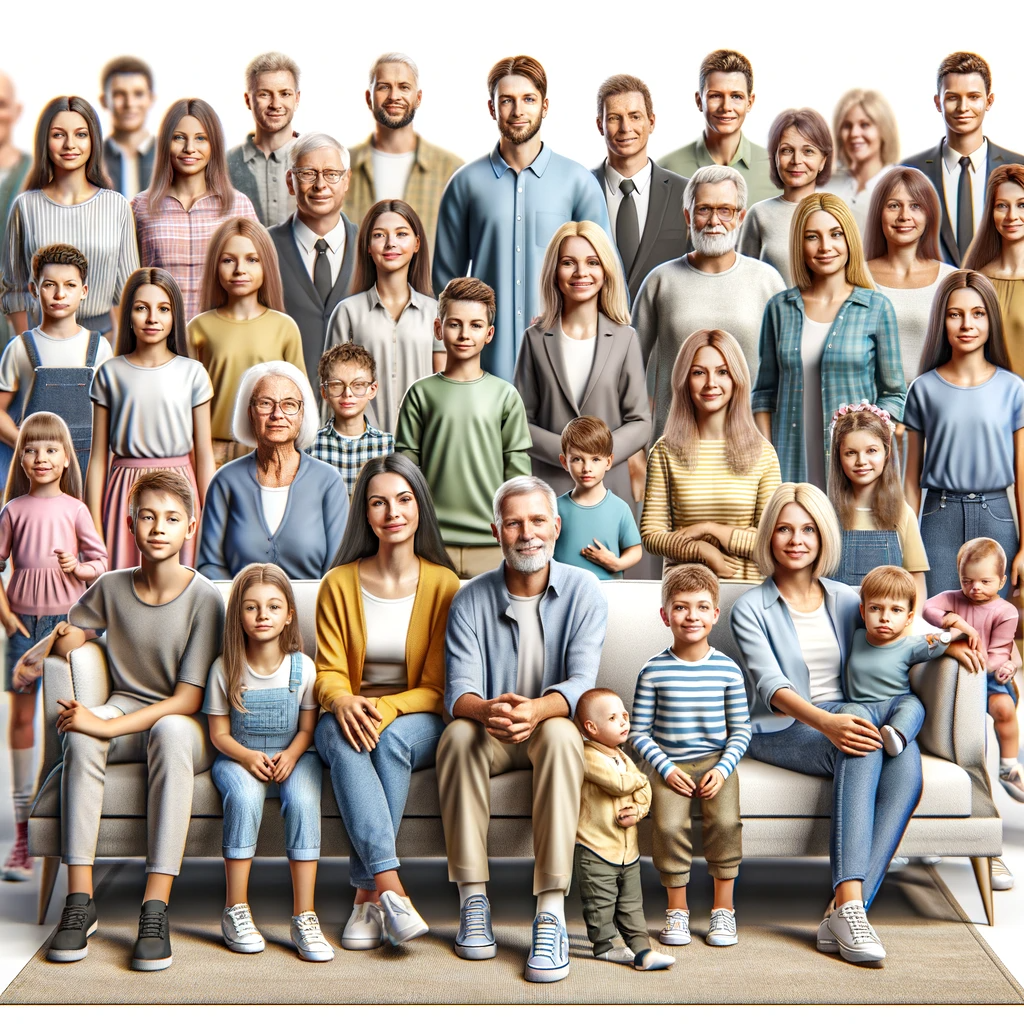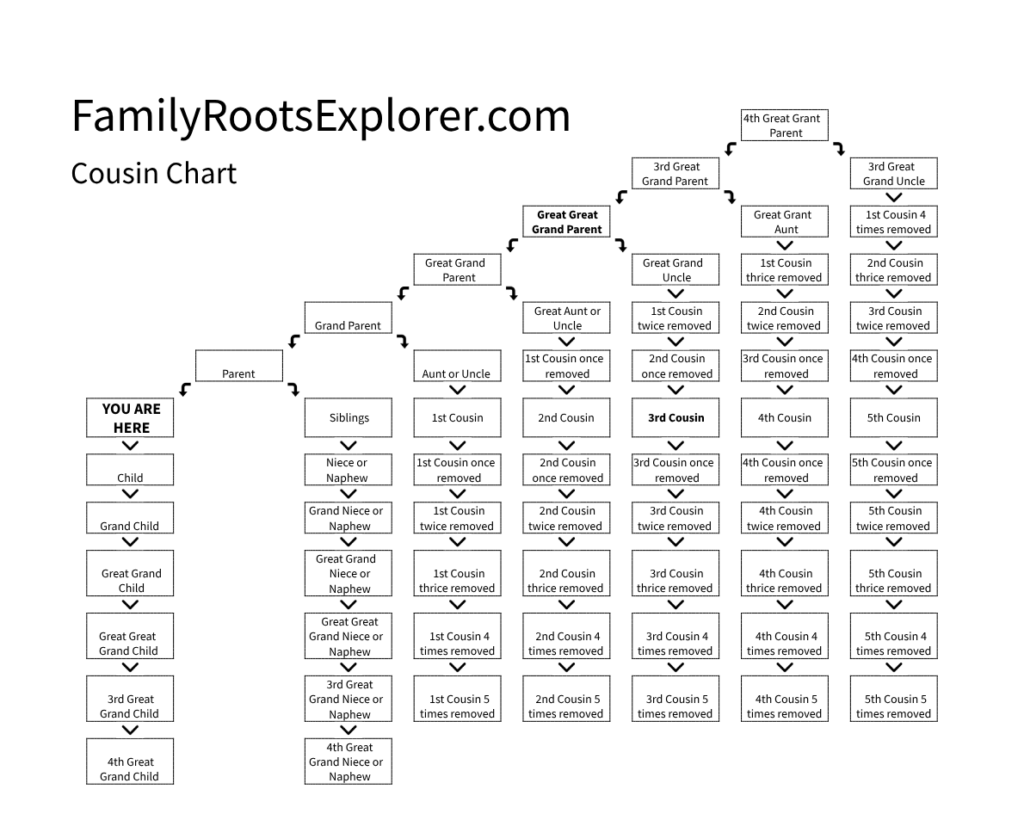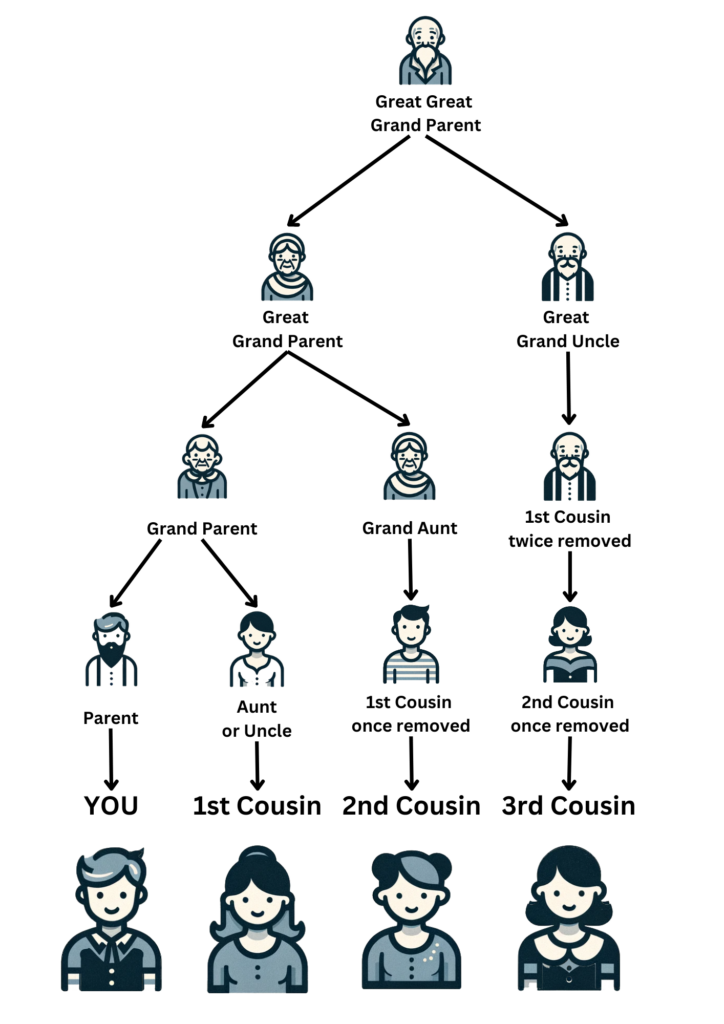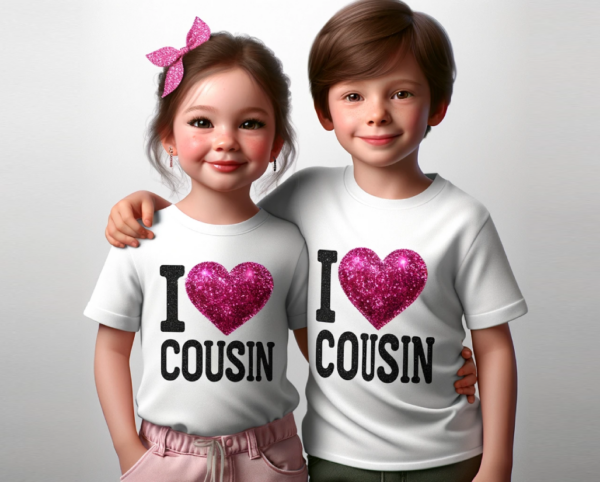Intro
Have you ever been at a family gathering and someone introduces you to a distant relative as your “third cousin”? And you find yourself nodding and smiling, pretending to understand what that means while secretly trying to figure out the family tree in your head? If this sounds familiar, don’t worry, you’re not alone. Many people struggle with understanding their family connections and how they relate to one another. In this blog post, we will be decoding what is a third cousin and providing a helpful cousin chart to make sense of all the different relationships within your family. So, let’s dive in and uncover the mystery of family connections!
Who Are My Relatives?

The diverse tapestry of your family consists of people you share a genetic or legal bond with. This network stretches from your immediate family, those closest to you, to members of your extended family who may be sprinkled across the globe. Your immediate family is your closest circle, and it includes your parents, siblings, and children. Beyond this core group, your extended family branches out and embraces your grandparents, aunts, uncles, and, of course, cousins. The relationship with cousins often stirs up a swirl of confusion because the terminology used to identify them is a blend of numbers and ‘removed’ labels. But fret not, as we continue our journey through this family connection labyrinth, we’ll be decoding the mystery behind these cousin conundrums.
Understanding the “Third Cousin” Concept
Let’s dive into the deep end of the gene pool to get to grips with the idea of the ‘third cousin’. Now, imagine a family reunion of epic proportions. At this gathering, your third cousins would be the ones who are grandchildren of your great-great-grandparents.
Think of it this way – you’re standing on the tip of a branch on your family tree. If you follow the trunk down to the roots, you’ll meet your great-great-grandparents, your great-grandparents, your grandparents, your parents and then, you. Now, if you choose to climb back up a different branch, you’ll encounter the relatives who are referred to as third cousins.
In essence, the ‘third’ in ‘third cousin’ is a marker of the generations you and your cousin are from the shared ancestors, your great-great-grandparents in this case. As you go further down the family tree, the number in front of ‘cousin’ keeps increasing. The first, second, third and so on, in front of the word ‘cousin’, signifies the distance from the shared ancestors.
Although the branches of your family tree may seem tangled at first glance, they’re actually surprisingly well-ordered. It’s all about understanding the system, and that’s what we’re here for. So, the next time you find yourself scratching your head at a family reunion, remember, you and your third cousins share more than just a slice of grandma’s apple pie – you share history, lineage, and a pair of great-great-grandparents.
On average, we have 190 third cousins and there is a 10% chance of sharing no DNA with a third cousin
Figuring Out the “Removed” Term
Ever scratched your head trying to decipher what ‘once removed’ means in the cousin conundrum? Well, get ready to clear up that mystery. Picture a family tree again. In this tree, ‘removed’ is a term used to describe the difference in generations between you and your cousin. Let’s use a ‘first cousin once removed’ as an example. This could either be the child of your first cousin or your parent’s first cousin. That’s right! Your father’s first cousin, for instance, is your first cousin once removed.
The concept of ‘removed’ is all about indicating a step away from a direct cousin relationship, like a first, second, or third cousin. It tells you that there is a generational gap, bringing an added dimension to the family connection. The number that follows ‘once’ – as in once, twice, thrice removed – represents the number of generations you are apart.
The ‘removed’ term may seem like a riddle wrapped in an enigma, but it’s actually quite logical once you get the hang of it. So the next time you’re at a family gathering and someone introduces themselves as your first cousin twice removed, you’ll know precisely what that means. Family get-togethers will never be the same again!
Who is My Father’s Cousin’s Daughter to Me?
Stepping into the realm of second cousins, we unravel the tie between you and your father’s cousin’s daughter. This relationship might seem like a complex riddle, but once decoded, it’s straightforward. Just like how you and your first cousin share grandparents, your second cousin status comes from sharing great-grandparents. So, in this case, your father’s cousin’s daughter becomes your second cousin, and you both share the same great-grandparents. This interconnected web of family ties paints a vivid picture of your extended family tree, and these connections are just a part of the rich tapestry that makes your family unique. It might seem like a game of ‘six degrees of separation’, but these labels help to identify and acknowledge these significant familial bonds. So, the next time you bump into your father’s cousin’s daughter at a family gathering, remember, she’s not just a distant relative – she’s your second cousin!
Who is My Mother’s Cousin’s Son to Me?
Navigating the branches of your family tree, let’s explore the link between you and your mother’s cousin’s daughter. This particular connection is similar to your father’s cousin’s daughter – both of these relationships classify as ‘second cousin’ relationships. When you and another individual share the same great-grandparents, you’re considered second cousins. So, your mom’s cousin to you is technically your first cousin once removed, and her daughter is your second cousin. You share a lineage through your maternal great-grandparents, making you part of the same extended family generation. So, the next time you cross paths with your mother’s cousin’s daughter, you’ll not only recognize her face but also the familial bond you share. You’re not just acquaintances at a family gathering, you are second cousins, bound by shared ancestral roots.
Can You Date Your Third Cousin?

Delving into the realm of dating within your own extended family tree can certainly stir up a myriad of emotions and questions. The notion of dating your third cousin might initially strike you as odd. However, when it comes to the legal perspective in the United States, it’s entirely within the bounds of the law to date or even marry your third cousin. But as we know, laws don’t always dictate our personal comfort zones or moral compasses.
Cultural beliefs, societal norms, and personal feelings significantly influence our perspectives on relationships with distant cousins. Some individuals and cultures may find the idea completely acceptable, while others may raise an eyebrow. The views on this issue can be diverse and complex, with varying degrees of acceptance across different societies, communities, and individuals.
It’s also important to note that the genetic ties between you and a third cousin are relatively distant. The shared DNA is significantly less than what you would share with a first or second cousin. This lessens the genetic concerns that some might associate with such relationships.
However, the most crucial aspect to consider is how you and your third cousin feel about this potential romantic relationship. It’s imperative to ensure both parties are comfortable, consent to the relationship, and understand the possible implications. This includes potential reactions from other family members and how this could impact your relationship dynamics within the extended family.
Remember, navigating your family tree’s maze isn’t just about understanding who’s who. It also involves deciphering the sometimes complicated emotions and decisions that come with these discoveries. It’s about respecting your family’s complex web while also honoring your own feelings and choices.
A Handy Chart for Family Connections
If you’re a visual person, making sense of the intricate network of family connections becomes much easier with a handy tool: the “cousin removed chart”. Imagine a diagram that portrays not just the vertical generations of a family but also the horizontal stretch of relatives across each generation. It is just that – a graphical depiction of your family tree that helps illustrate how you are related to each family member, especially those puzzling ‘removed’ cousins.
The chart puts you, the viewer, at the base and branches out, highlighting each level of cousinhood and the generations that separate you. Moving vertically up the chart, you’ll come across first, second, third cousins, and so forth. But, the magic lies in the horizontal movement – that’s where you’ll see the ‘removed’ aspect come into play, visually representing the generational gap between you and your cousin.

Whether it’s understanding the relation between you and your father’s cousin’s daughter or figuring out the connection with that mysterious third cousin twice removed you met at the last family gathering, the chart is there to simplify things for you. Just trace along the lines, and you’ll quickly decipher the relationship in question.
While a chart may not capture the emotions, stories, or personal connections behind each relationship, it does provide a clearer understanding of the genealogical ties that bind you to your extended family. It’s like having a map that guides you through the labyrinth of your family lineage, making your next family reunion less of a guessing game and more of an opportunity to connect with your roots. So the next time you find yourself lost amidst a sea of relatives, pull up your cousin removed chart and let it navigate you through the beautifully complex web of your family tree.

Conclusion
Having navigated through the complex world of family ties together, we’re now equipped with a new understanding of terms like ‘third cousin’ and ‘once removed’. We’ve explored the rich tapestry of relationships that make up your extended family and decoded the mystery behind the cousin conundrum. We’ve come to realize that our family trees are not just a map of our ancestors, but also a guide to understanding our own place in the grand scheme of our lineage. Whether it’s grappling with the idea of dating a distant cousin or merely wanting to identify that relative at family gatherings, we now have the tools to make informed decisions that respect our unique familial bonds. So, as we move forward, we do so with a renewed sense of clarity and appreciation for our family connections. After all, they say knowledge is power, and knowing your family tree certainly gives you the power to connect, respect, and understand your roots better.
